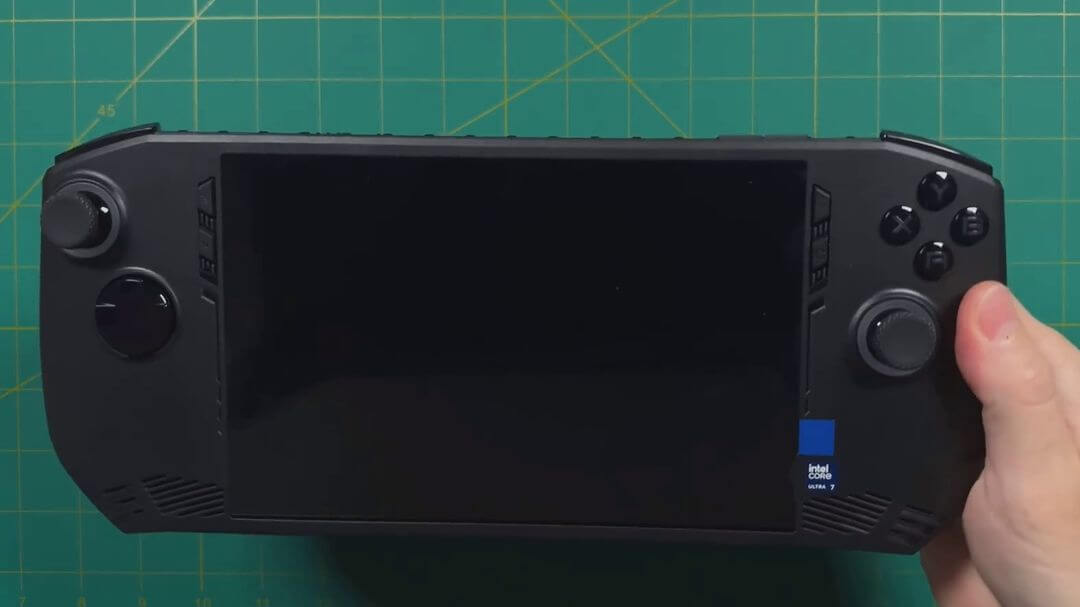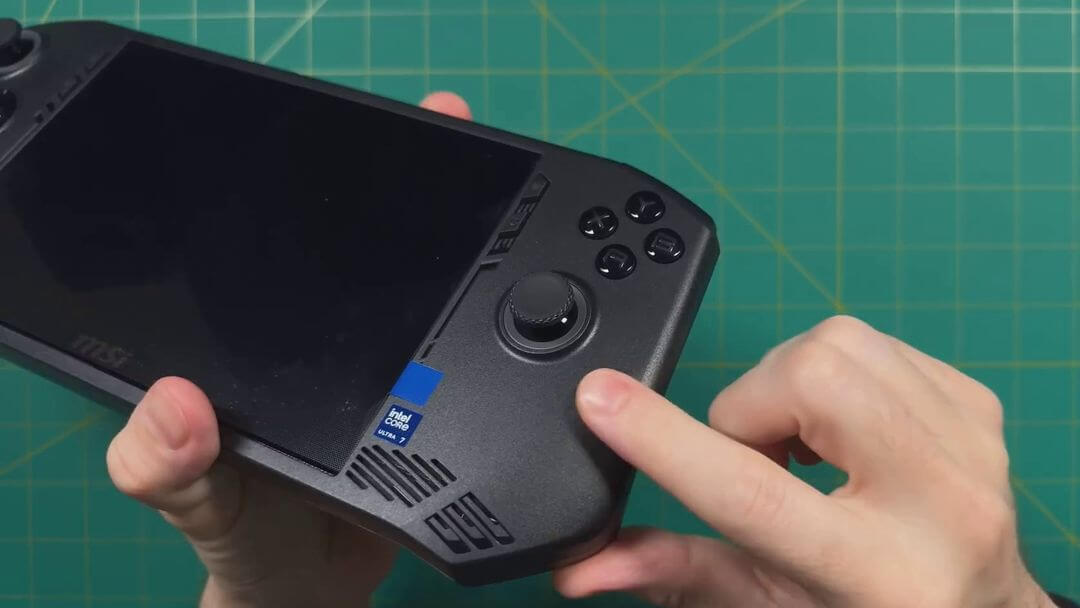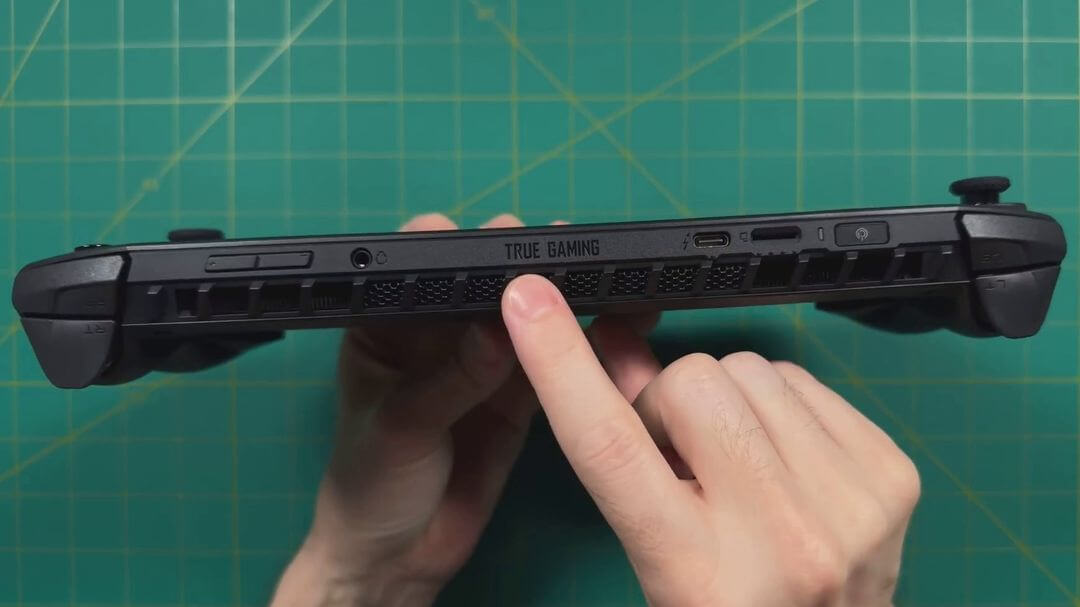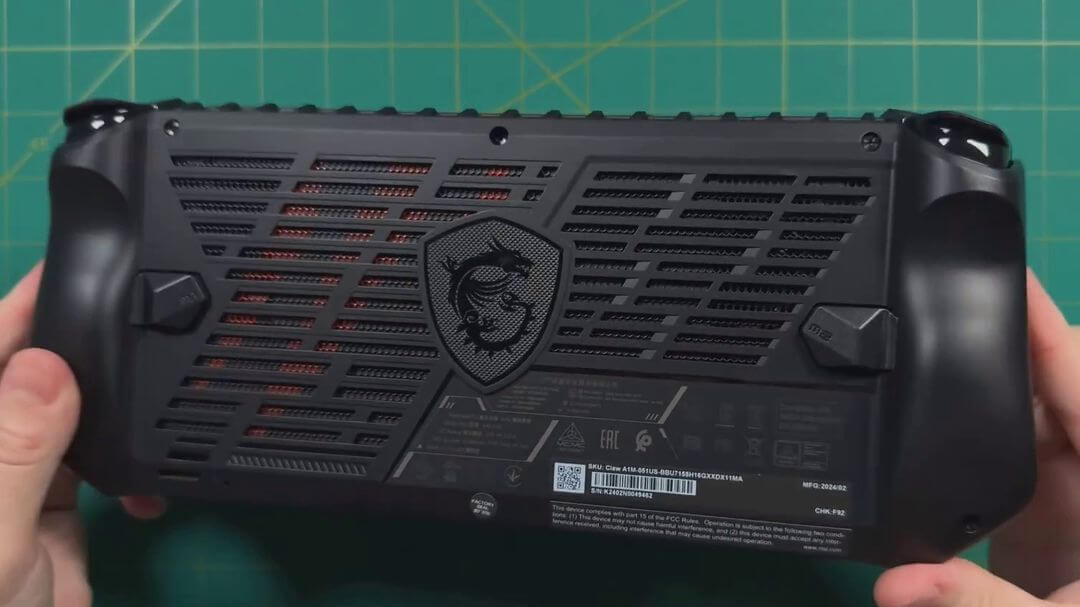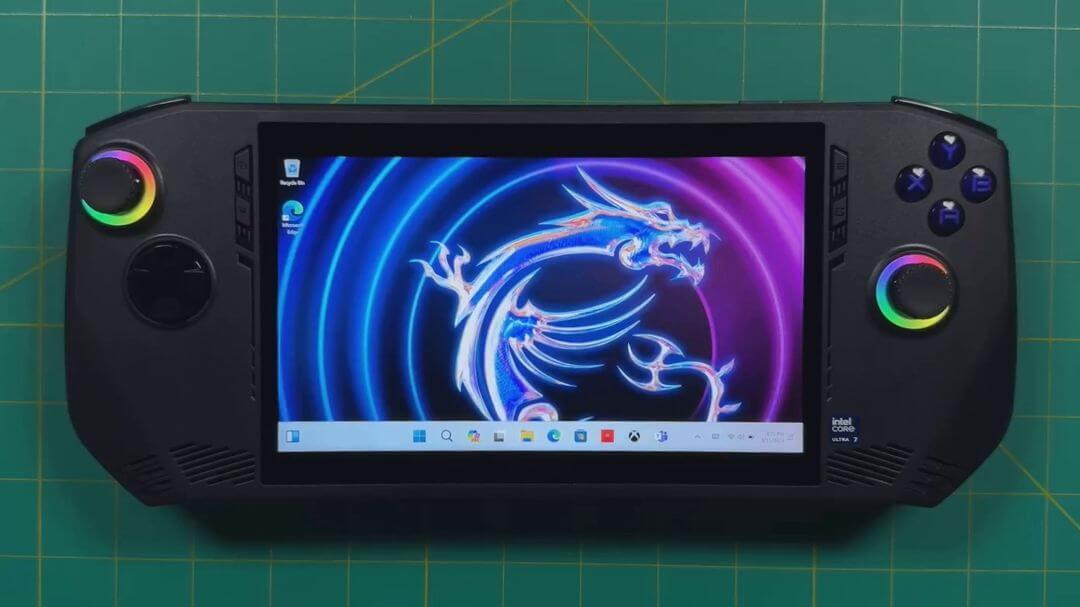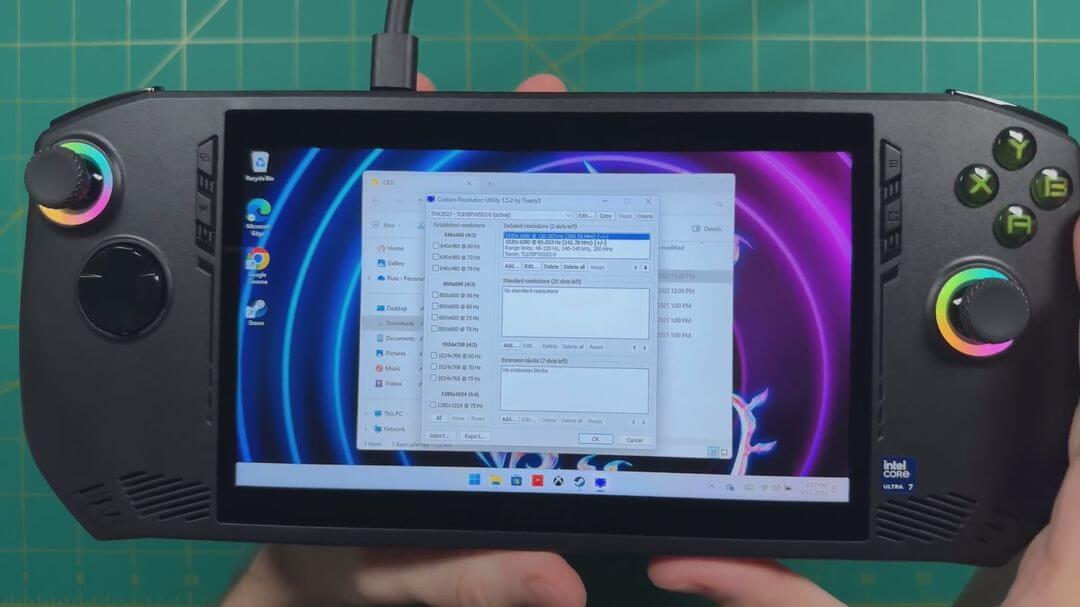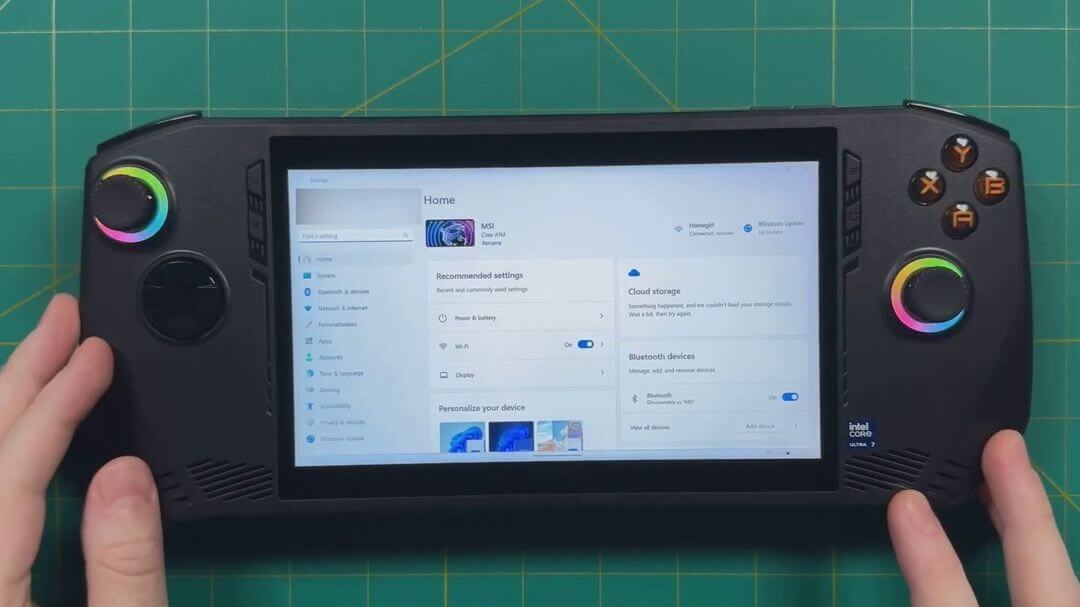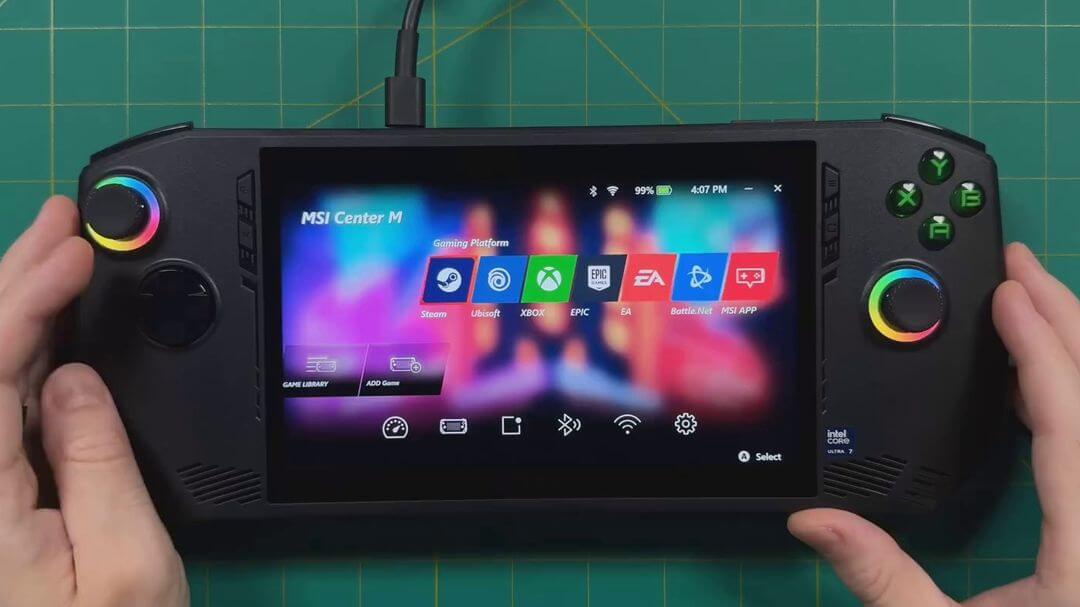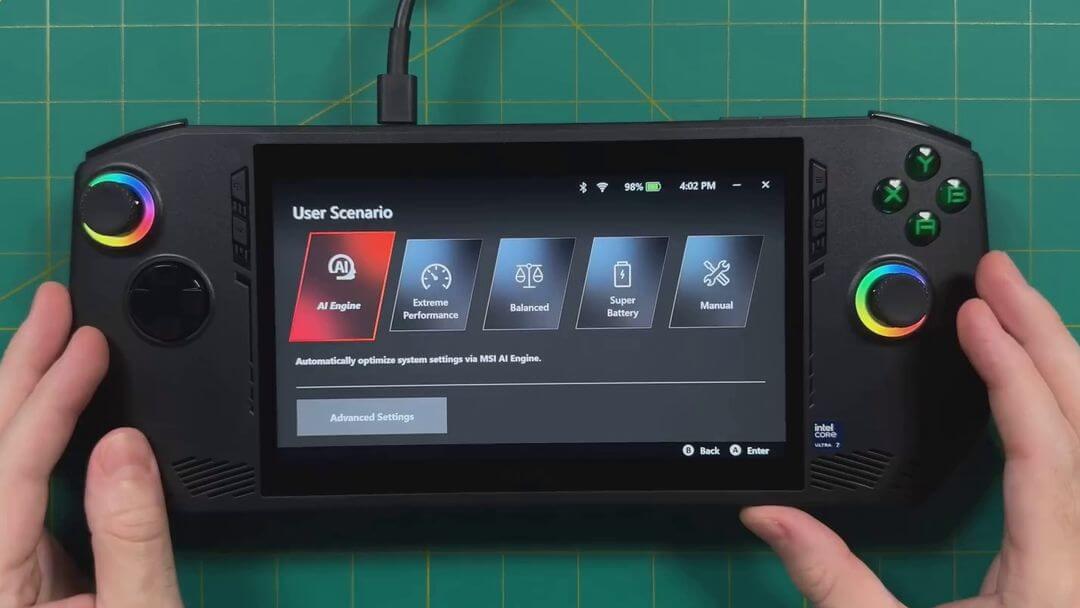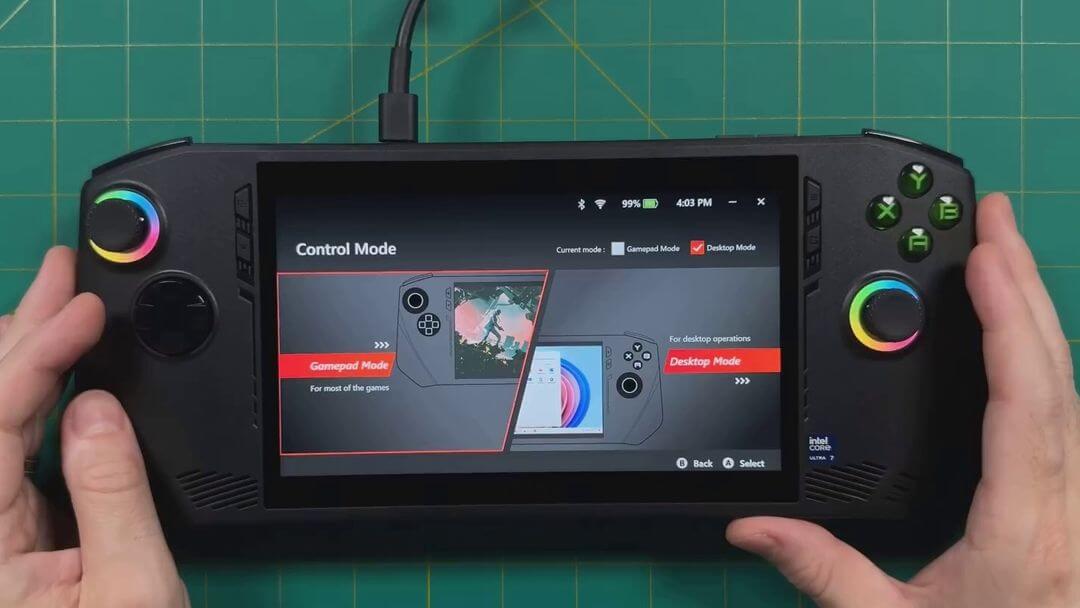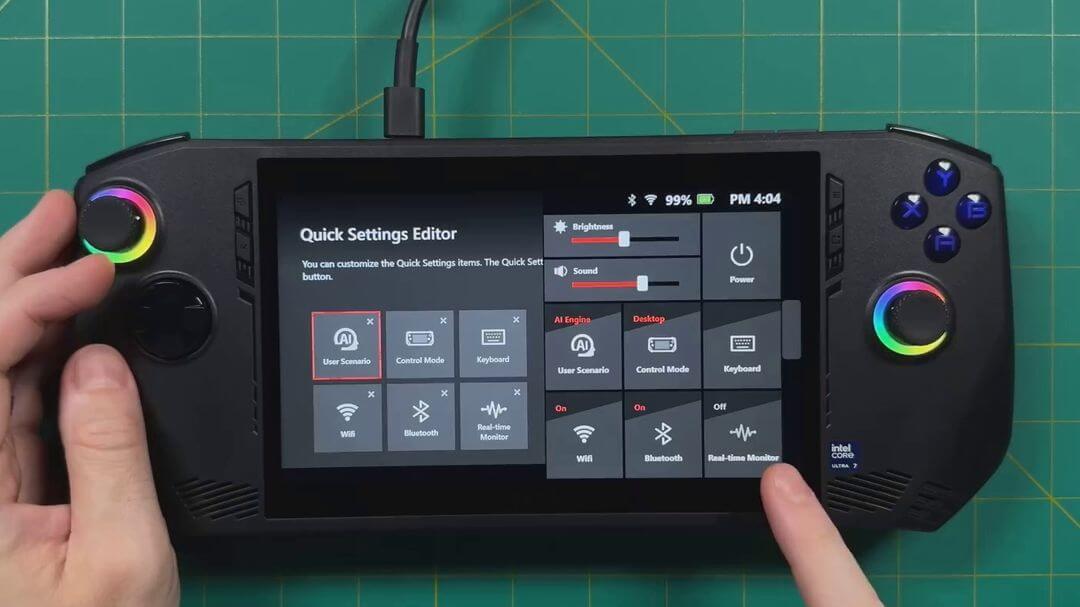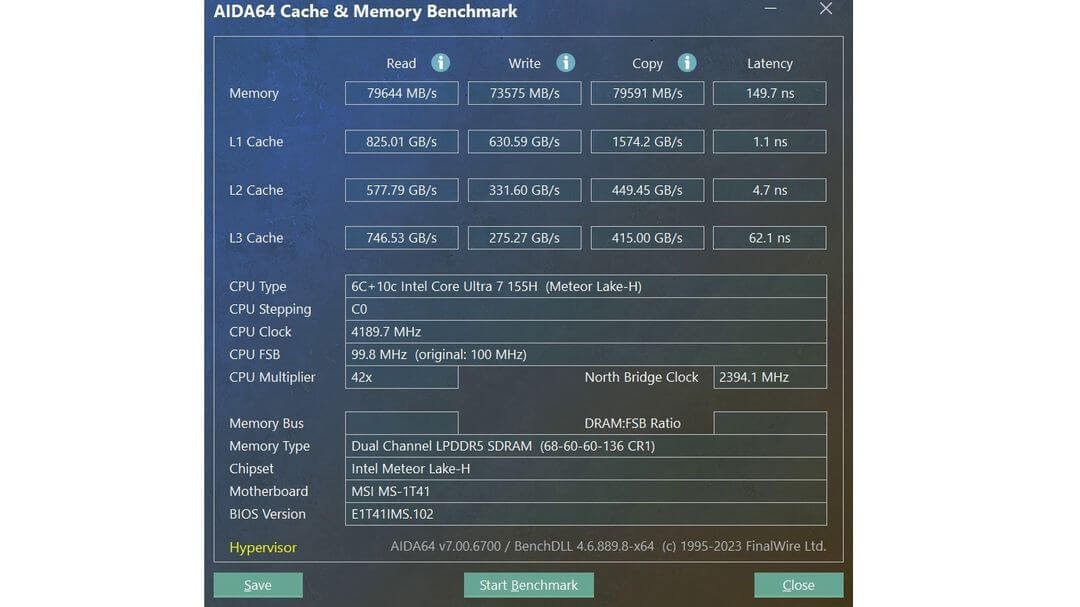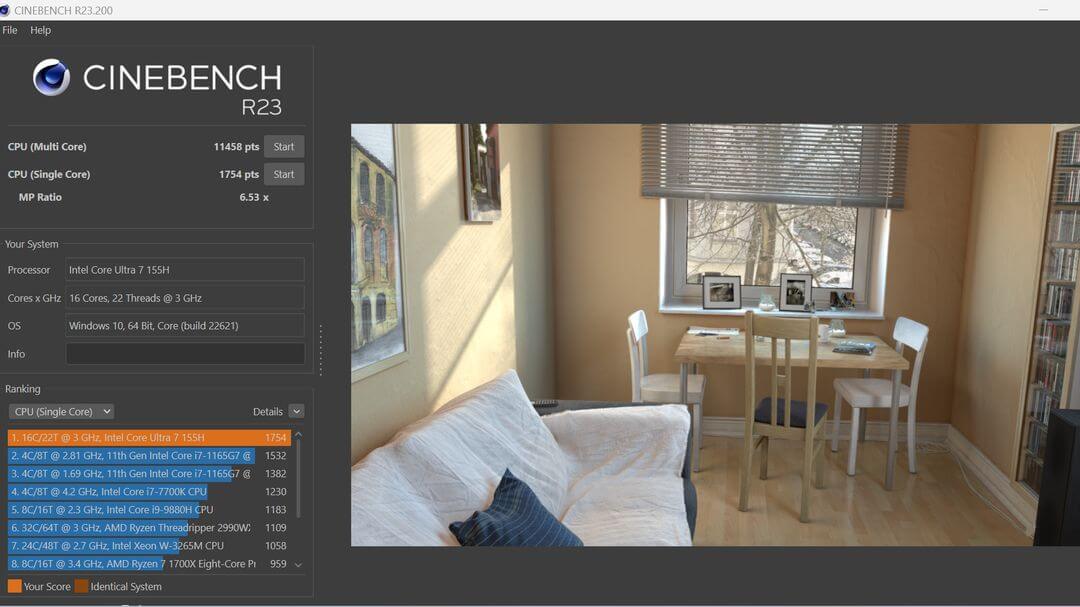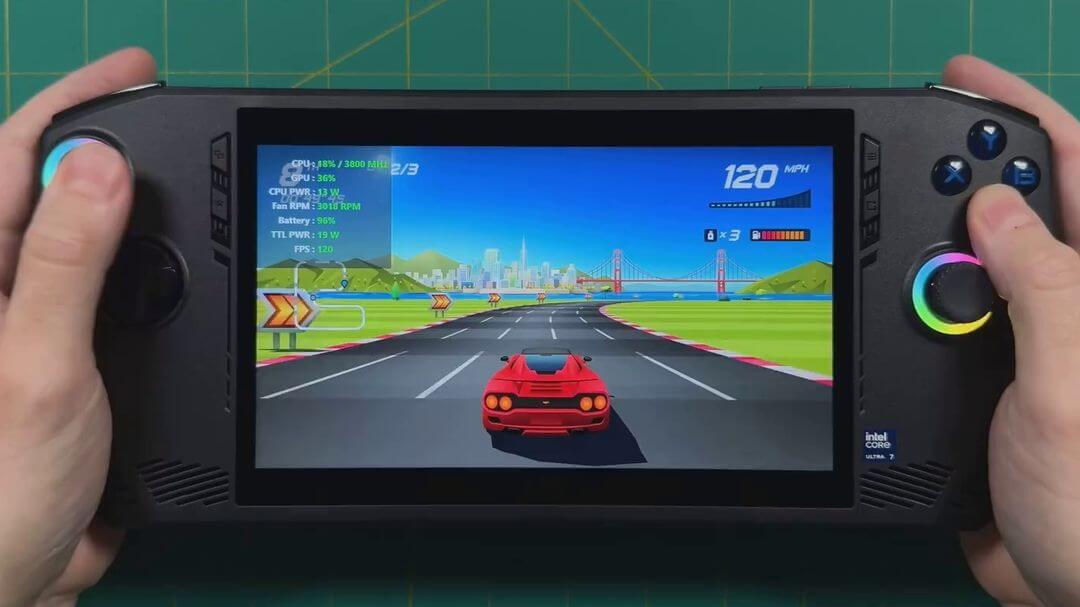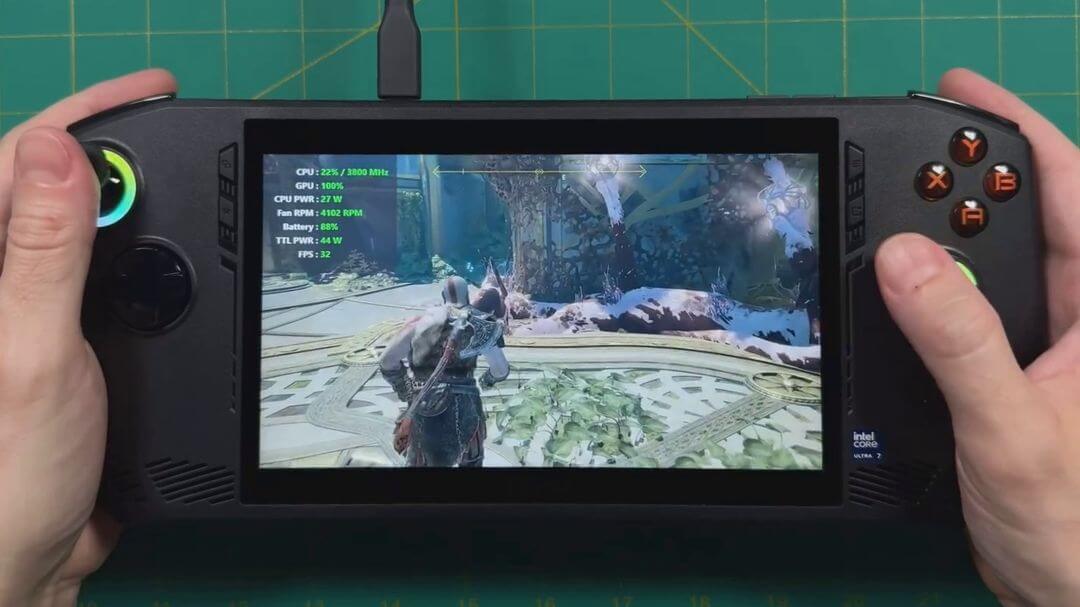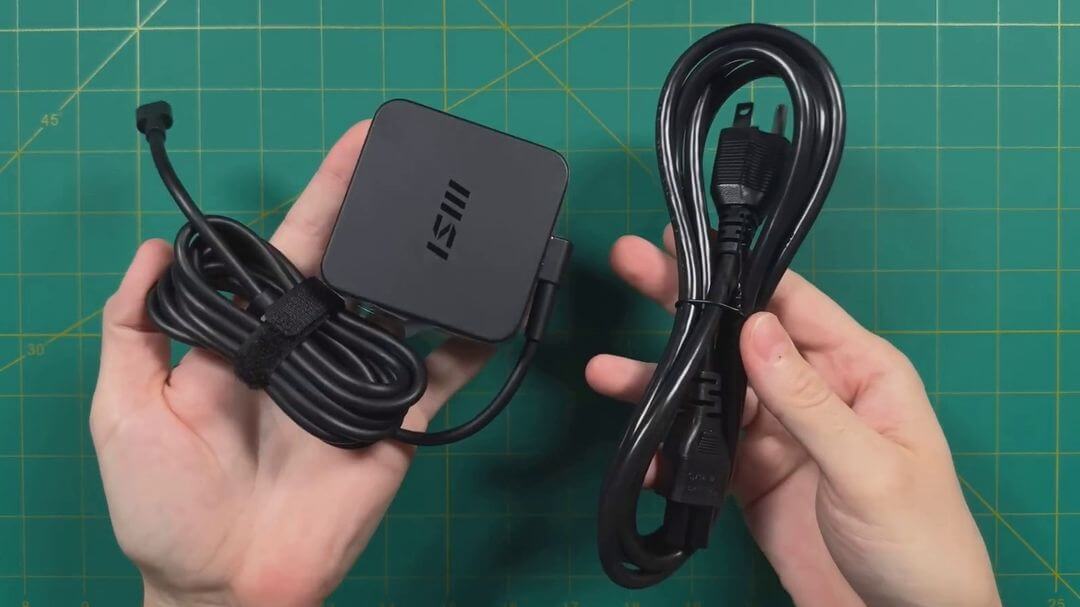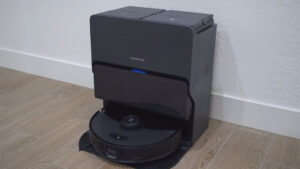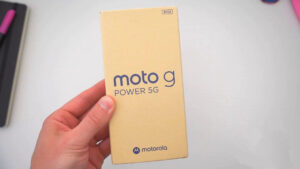MSI Claw Review: The First Intel-Powered Gaming Handheld

Today, we turn our attention to the highly anticipated MSI Claw gaming console. In a market increasingly crowded with hybrid portable devices, MSI has made a bold move by becoming the first to integrate Intel’s Meteor Lake processor into its handheld gaming solution, setting itself apart from the AMD-dominated competition. Let’s dive into the intricacies of the Claw gaming handheld and explore its strengths and weaknesses.
MSI Claw: Video Review
| Specs | MSI Claw |
| Screen | 7” FHD (1920x1080), 120Hz, IPS-Level, Touchscreen |
| CPU | Intel Core 7 Ultra 155H (1,4–4,8 ГГц) |
| GPU | Intel ARC Graphics |
| RAM | 16GB LPDDR5-6400 |
| Storage | 512GB/1TB 1x M.2 2230 SSD slot (NVMe PCIe Gen4) |
| OS | Windows 11 Home |
| WIFI | Intel Killer BE Wi-Fi 7 |
| Bluetooth | Bluetooth 5.4 |
| Security | Fingerprint Security |
| I/O | 1x Type-C (USB / DP / Thunderbolt 4) with PD charging, 1x Micro SD Card Reader |
| Audio | 2 x 2W Speaker |
| Audio jack | 1x Mic-in/Headphone-out Combo Jack |
| Control | RGB ABXY buttons, RGB L & R Hall Effect analog sticks, D-pad, L & R Hall Effect analog triggers, |
| L & R bumpers, View button, Menu button, MSI Center M button, Quick Settings button, | |
| Macro button (M1/M2), HD haptics | |
| Battery | 53 Wh |
| Dimensions | 294 x 117 x 21.2 mm |
| Weight | 675 g |
| Color | Black |
MSI Claw: Design
The MSI Claw, borrowing heavily from the form factor established by the ASUS ROG Ally and further popularized by the Steam Deck, is a testament to the evolving landscape of portable gaming consoles. While it’s evident that the Claw draws significant inspiration from its predecessors, it also brings some noteworthy differences to the table.
One of the most apparent contrasts lies in the color scheme; whereas the ROG Ally sports a striking white exterior, the Claw opts for a sleek black finish. Despite this, the physical dimensions of the Claw closely mirror those of the Ally, albeit with a slightly longer and wider profile. However, both maintain a similar thickness, while the Claw edges out the Ally in weight by a modest 67 grams.
In terms of build quality, the Claw boasts a plastic construction reminiscent of the Steam Deck, offering a grippy texture without being prone to smudging—a practical choice for a handheld gaming device. While the design may seem familiar to enthusiasts, MSI has made efforts to inject its own flair, notably with the “True Gaming” engraving on the device’s surface. This overt nod to gaming culture may divide opinion, but the inclusion of MSI’s iconic dragon logo and ample ventilation channels reaffirms its gaming-centric identity.
Examining the device’s top side reveals a layout akin to the ROG Ally, complete with a sizable exhaust vent, power button doubling as a fingerprint sensor, LED charging indicator, micro SD card slot, USB 4 Thunderbolt port, headphone jack, and volume controls. The inclusion of a micro SD card slot may raise concerns, given past issues with similar implementations, but MSI claims to have addressed this through optimized cooling distribution—an assertion that only real-world usage can validate.
Venturing to the back, one notices the abundance of intake ventilation, indicating a keen focus on thermal management—a crucial consideration for prolonged gaming sessions. Additionally, the presence of macro buttons (M1 and M2) enhances the device’s utility, albeit with a tactile response that may require some getting used to.
Display
The MSI Claw, sporting a 7-inch diagonal LCD panel with Full HD (1080p) resolution, closely mirrors the display specifications of its contemporaries, particularly the ROG Ally. With a maximum refresh rate of 120 Hz, the Claw promises fluid and responsive gameplay, akin to the experience offered by its ASUS counterpart.
While the similarities between the two devices’ displays are undeniable, subtle nuances set them apart. The ROG Ally edges out slightly in terms of brightness, offering a marginally brighter screen, while its panel calibration delivers colors that are marginally more authentic. However, these differentiators are nuanced and are unlikely to be decisive factors for most users, especially with the emergence of the new OLED-equipped Steam Deck, which sets a new standard for display quality in the handheld gaming market.
Specs
The MSI Claw distinguishes itself as the first handheld gaming console to feature an Intel-based architecture, marking a departure from the AMD processors commonly found in similar devices. Unlike the ROG Ally’s AMD Z1 Extreme, the Claw is powered by the formidable Core Ultra 7 155H, etched using Intel’s 4th generation 7 nm node technology.
This formidable chip boasts a 16-core configuration, comprising 6 P-cores, 8 E-cores, and 2 LP E-cores, delivering a maximum frequency of 4.8 GHz and a combined cache of 24 MB. However, the true highlight lies in its integrated graphics solution—the iGPU—which integrates 8 Xe-cores in ARC architecture, positioning it to compete directly with AMD’s RDNA 3, a noteworthy feat in the realm of portable gaming.
Complementing the potent processor is 16 GB of LPDDR5-6400 RAM, ensuring seamless multitasking and smooth gameplay. Storage options are equally generous, with configurations available in either a 1 TB Kioxia NVMe SSD or a more compact 512 GB model. It’s worth noting that SSD replacement may pose challenges compared to competitors, underscoring MSI’s commitment to system integrity and performance.
In addition to its formidable processing power, the Claw offers cutting-edge connectivity features, including Wi-Fi 7 and Bluetooth 5.4, ensuring seamless online gaming and peripheral compatibility. Moreover, the device packs a substantial 53 Wh battery, surpassing the capacities of both the ROG Ally and the Steam Deck OLED, promising extended gaming sessions without the need for frequent recharges.
Software
The MSI Claw, much like its counterparts in the handheld gaming console arena, operates on the Windows 11 operating system, offering users a familiar computing environment tailored for gaming on the go. However, unlike the Steam Deck, which adopts a custom Linux-based operating system, the Claw relies on Windows 11, presenting both advantages and challenges in user experience and software compatibility.
Navigating Windows 11 using traditional gamepad commands is feasible, albeit not always the most intuitive option. Recognizing this, MSI has introduced Center M, a graphics overlay akin to ASUS designed Armory Crate, to streamline the user interface and enhance accessibility for gaming-centric tasks. Despite its promising premise, Center M is still a work in progress, with multiple updates during testing yet to fully address issues such as language localization and software bugs.
Furthermore, the Claw’s reliance on Intel’s graphics drivers poses additional challenges, particularly in handling demanding titles like Cyberpunk 2077 and Marvel’s Guardian of the Galaxy. Despite Intel’s efforts to provide timely updates, compatibility issues persist, requiring users to resort to workaround solutions such as modifying launch options or adjusting shared memory settings.
Performance
The MSI Claw, with its Intel-based architecture, represents a departure from the familiar territory of AMD solutions in the handheld gaming console market. To gain insight into its performance capabilities, we conducted a comprehensive assessment using benchmarking tools like AIDA64, CrystalDiskMark, and Cinebench R23.
In terms of memory performance, the DDR5 implementation on the Claw delivers impressive read, write, and copy speeds, showing the strengths of Intel’s memory architecture. However, latency results paint a less favorable picture, with unusually high values that raise concerns about responsiveness.
While the SSD performance on the Claw is commendable, it falls short compared to the Lenovo machine, indicating room for improvement in storage speed optimization. Nevertheless, in CPU-intensive tasks like Cinebench R23, the Claw’s Core Ultra processor holds its ground, matching or even surpassing the performance of its AMD-based counterparts in multi-core scenarios.
Turning to gaming performance, the Claw faces significant challenges, particularly evident in titles like Cyberpunk 2077, where performance is considered unplayable even with advanced upscaling technologies like XeSS ‘performance’. In contrast, games like Shadow of the Tomb Raider offer a more favorable experience, with the Claw outperforming the Steam Deck OLED. However, it still lags behind the Legion Go and ROG Ally, especially when native resolution is compared.
Despite its robust 53 Wh battery, the Claw struggles to maintain satisfactory battery life, with the higher TDP of the Core Ultra 7 155H processor contributing to increased power consumption. As a result, autonomy suffers, with gaming sessions yielding results comparable to, or marginally better than, those of the ROG Ally.
However, amidst these performance challenges, the Claw excels in cooling management, with efficient thermal dissipation ensuring that the device remains cool even under heavy load. Additionally, while the power brick may generate heat, the Claw itself maintains consistent performance levels, allowing for extended gaming sessions without discomfort.
Battery life
Starting with less demanding titles like Horizon Chase, the Claw showcased its capability to manage power consumption efficiently. At 120 Hz and 1080p, the device maintained a manageable TDP of around 13 watts, translating to approximately 2.5 to 3 hours of gameplay—a respectable feat considering the high refresh rate. Dropping down to 60 Hz further extended battery life, clocking in at around 3.5 to 3.75 hours.
However, as the intensity of games increased, so did the strain on the device’s battery life. Playing titles like Hades at higher settings led to a noticeable uptick in power consumption, resulting in shorter playtimes. At 1080p and 60 fps, the Claw managed around 2 hours of gameplay—acceptable but not exceptional.
Transitioning to more graphically demanding titles like Halo Reach and Destiny 2 unveiled further challenges. Despite being Xbox 360-era games, their performance requirements have proven taxing for the Claw, with power draw exceeding expectations. While maintaining 60 fps at 1080p, the device exhibited a significantly higher TDP compared to equivalent AMD systems, translating to a paltry 1 hour and 20 minutes of gameplay—a far cry from the endurance offered by its competitors.
In the case of Destiny 2, even at lowered settings and resolution, the Claw struggled to deliver satisfactory battery life. With the resolution dialed down to 720p and graphics set to low, the device still demanded a significant 49 to 50 watts of power, resulting in a mere hour of playtime—underscoring the device’s inefficiency in handling more demanding titles.
MSI Claw: Conclusion
By embracing Intel’s processor technology, MSI has stirred up the landscape of portable gaming consoles, breaking the stronghold of AMD’s dominance and ushering in a new era of competition and innovation. However, while the MSI Claw represents a bold step forward, it falls short of expectations compared to its AMD-based counterparts, making it challenging to wholeheartedly recommend as a top choice in the current market.
In terms of raw performance, the Core Ultra processor shows promise, but it fails to deliver on expectations, especially when compared to AMD’s Ryzen chips. Despite efforts to optimize performance with technologies like XeSS, the Claw still lags behind in-game performance, with animation speed notably lacking. Furthermore, issues with the Extreme Performance option and subpar battery efficiency further detract from the overall user experience.
Moreover, while MSI has crafted a sleek and stylish design with the Claw, it struggles to match ASUS’ competitive pricing strategy, making it difficult for the Claw to stand out in a crowded market. While the device boasts impressive features such as a beautiful Full HD 120 Hz screen, controlled heating, and compatibility with Windows games and Game Pass, it ultimately falls short in delivering the value proposition that consumers expect.
In summary, while the MSI Claw offers a glimpse into the potential of Intel-based handheld gaming consoles, it currently falls short of expectations in terms of performance, pricing, and overall user experience. With ongoing software improvements and potential advancements in Intel’s processor technology, the Claw may yet evolve into a more compelling option in the future.
You can also check out the best-selling PC Gaming Handheld on Amazon:


